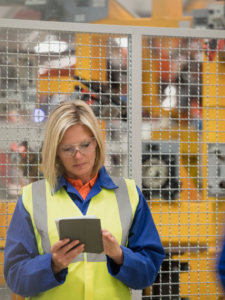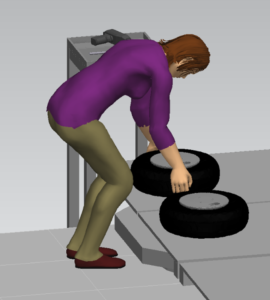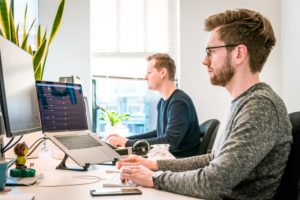Anti-fatigue mats were designed to reduce fatigue resulting from standing for sustained periods of time. Anti-fatigue mats are typically used on existing flooring to help support and provide a cushion. The feet, legs, knees, and hips are most affected by prolonged standing. Anti-fatigue mats are often seen in kitchens, laboratories, and manufacturing settings. With the increasing popularity of sit-stand desks they may now have a place in the office too.
To see other workplace comfort solutions, read the full article below.
—
Anti-fatigue mats were designed to reduce fatigue resulting from standing for sustained periods of time. Anti-fatigue mats are typically used on existing flooring to help support and provide a cushion. The feet, legs, knees, and hips are most affected by prolonged standing. Anti-fatigue mats are often seen in kitchens, laboratories, and manufacturing settings. With the increasing popularity of sit-stand desks they may now have a place in the office too.
Even though anti-fatigue mats do not eliminate sore feet, tiredness, and discomfort, they do provide some comfort for workers standing for extended periods of time. To help reduce the amount of stress on hips, legs, knees, and feet, there are other options companies can seek in addition to using anti-fatigue mats.
If feasible consider changing the flooring material. This will aid in reducing discomfort, tiredness, and sore feet. Concrete flooring is the least comfortable to stand on for long periods of time. Many manufacturing companies are now installing wood flooring over the top of the existing floor. Wood flooring is more comfortable for workers and helps to reduce slips and falls.
The operator workstation could be altered to allow the worker to change positions throughout the course of the work shift. Having the correct and comfortable shoes for the job is essential in reducing pains and aches caused by prolonged standing. There are two types of soles for shoes which can be used to help alleviate sore and tired feet. Outer soles are applied by strapping the soles to existing footwear and safety boots. Insoles are simply inserted inside of your shoes. Either option allows you take mobile anti-fatigue matting with you wherever you go.
Manufacturer’s of anti-fatigue matting state that benefits of using these materials include reduced tension and pressure on the spine, stimulated circulation, and reduced arch and heel pain caused by flattening of the feet. Along with the benefits of anti-fatigue matting, however, there is a setback to consider. Over periods of time anti-fatigue mats can begin to disintegrate leading to trip hazards and can become a safety concern.
In conclusion anti-fatigue mats are beneficial to have in areas of work which requires standing for long periods of time. Over time anti-fatigue mats will have to be replaced due to disintegration. Although anti-fatigue mats will not totally eliminate the problems associated with standing for an extended period of time; they will minimize the amount of stress on the body of the worker.
References
Anti-fatigue Mats. 2006. Web. https://www.ccohs.ca/oshanswers/ergonomics/mats.html
Alexander, Sue. Anti-fatigue Mats. 2007. Web. https://www.optimiseltd.co.nz/Anti-fatigue mats.pdf

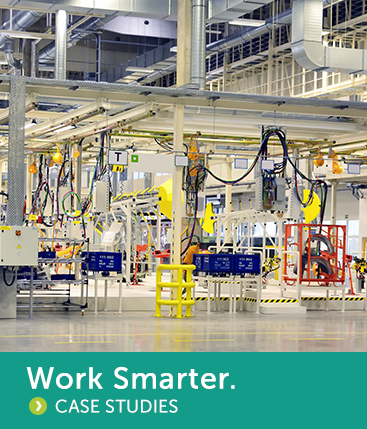




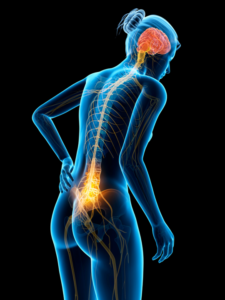

 Why Sandalwood?
Why Sandalwood?


 We are a one-stop-shop for launching job rotation for any employer from conception to implementation. Our experts tailor our services to meet the needs of our customers by collaborating with them throughout the entire process. We do not offer cookie cutter solutions for job rotation because the needs of employers vary significantly.
We are a one-stop-shop for launching job rotation for any employer from conception to implementation. Our experts tailor our services to meet the needs of our customers by collaborating with them throughout the entire process. We do not offer cookie cutter solutions for job rotation because the needs of employers vary significantly. Why Sandalwood?
Why Sandalwood?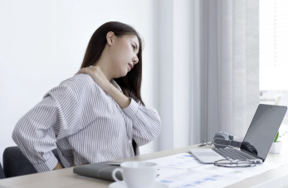



 Sandalwood is pleased to offer solutions above and beyond the traditional ergonomic assessments. With an in-depth knowledge of various digital human modelling software suites, integration and adoption to your health and safety programs has never been easier. Sandalwood is experienced in ergonomic program design as well as industry leaders in digital human modelling services. We have a diverse team that is able the leverage the results from the digital human model to provide in depth risk assessments of future designs and current state. Sandalwood is also able to pair these assessments with expertise and provide guidance on the best solution for you. Sandalwood is also on the forefront of emerging technologies and able to integrate Motion capture, Wearables, and extended or virtual reality into your ergonomic program.
Sandalwood is pleased to offer solutions above and beyond the traditional ergonomic assessments. With an in-depth knowledge of various digital human modelling software suites, integration and adoption to your health and safety programs has never been easier. Sandalwood is experienced in ergonomic program design as well as industry leaders in digital human modelling services. We have a diverse team that is able the leverage the results from the digital human model to provide in depth risk assessments of future designs and current state. Sandalwood is also able to pair these assessments with expertise and provide guidance on the best solution for you. Sandalwood is also on the forefront of emerging technologies and able to integrate Motion capture, Wearables, and extended or virtual reality into your ergonomic program.